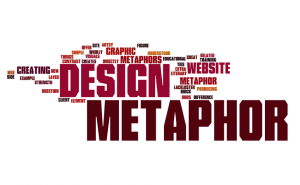 Studying design at uni, you probably tended to talk an awful lot about the metaphor in designs. Now, this is something that tends to lean towards the artsy side of things, but that doesn’t mean it’s any less important. You see, absolutely nailing the design metaphor can be the difference between producing a lackluster piece of page, web or graphic design, and creating something that will last for centuries on the strength of its visual alone. If you feel a bit lost and want an explanation of what it means to have a metaphor in your design, read on.
Studying design at uni, you probably tended to talk an awful lot about the metaphor in designs. Now, this is something that tends to lean towards the artsy side of things, but that doesn’t mean it’s any less important. You see, absolutely nailing the design metaphor can be the difference between producing a lackluster piece of page, web or graphic design, and creating something that will last for centuries on the strength of its visual alone. If you feel a bit lost and want an explanation of what it means to have a metaphor in your design, read on.
What is a Metaphor?
When we talk about metaphors within design, we’re talking about something related to a literary metaphor, but wholly different in its own way. A metaphor is anything that creates an extra layer for your design. For instance, if you’re creating a website for a restaurant-owning client, and you make the site use a complex menu of chalkboard menus and daily specials, that’s your metaphor. “Restaurant menus†is your metaphor. This ties directly with what the client does and what they offer, and in a way that’s completely understood by the viewer without having to think too much.
In contrast, a website that has no obvious metaphor will be just a plain, jane website. A metaphor, on the other hand, will be immediately apparent, and sometimes in a way that’s a bit hard to peg. Making sense?
How to Spot the Metaphor in Your Work
If you’re not trained by a university in graphic design, you may find it a bit hard to find the metaphors within your work. This is because we tend not to think about this deliberately. However, ask yourself this: “What have I done to tie all my pages together?†Typically, whatever that tying element is will be your metaphor. In our previous example, if you’ve been using lots of chalk and menu graphics on your new site design, odds are that that’s your metaphor. Asking that question is a quick and simple way to figure the design out, and if you’re really paying attention, you should’t have too much trouble with it. We promise.


